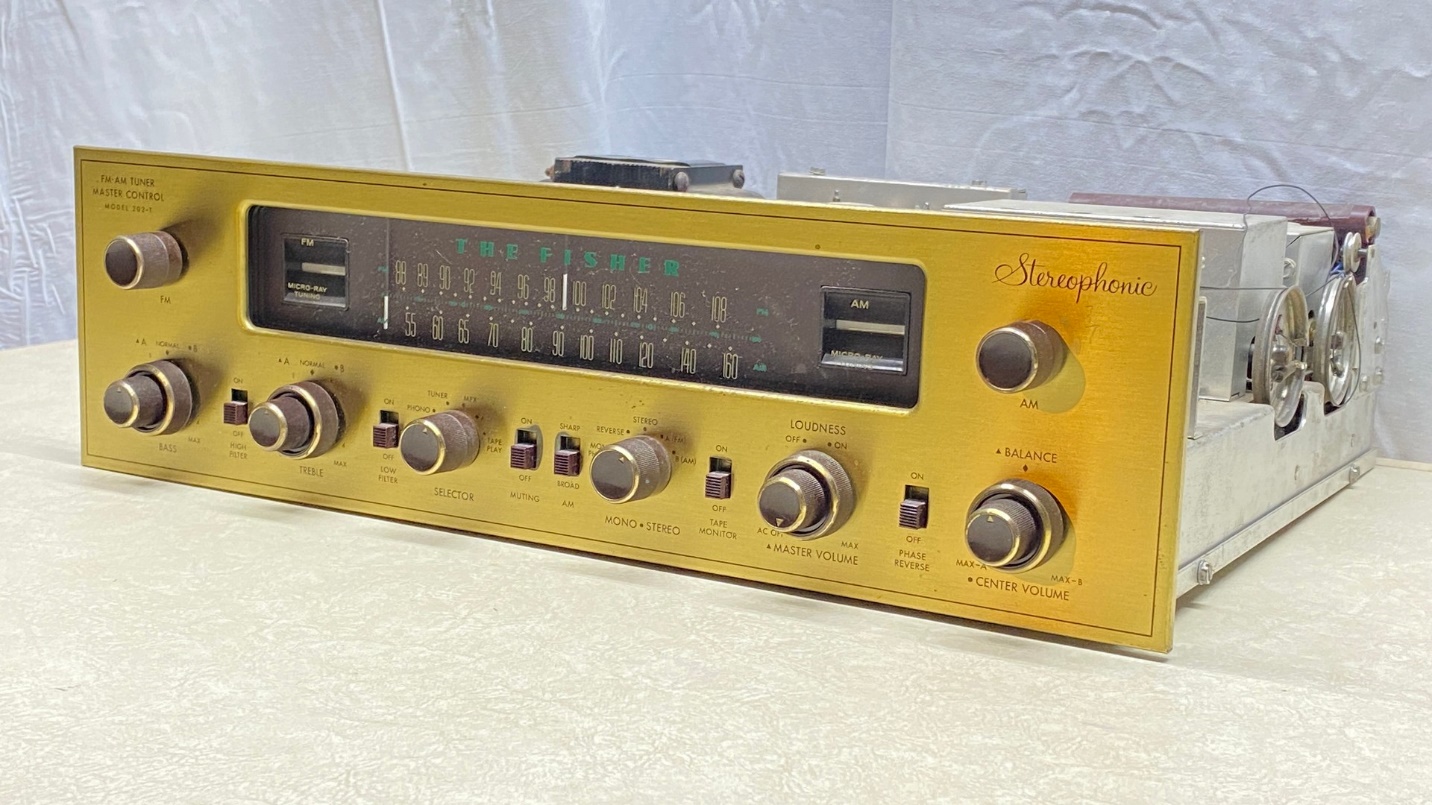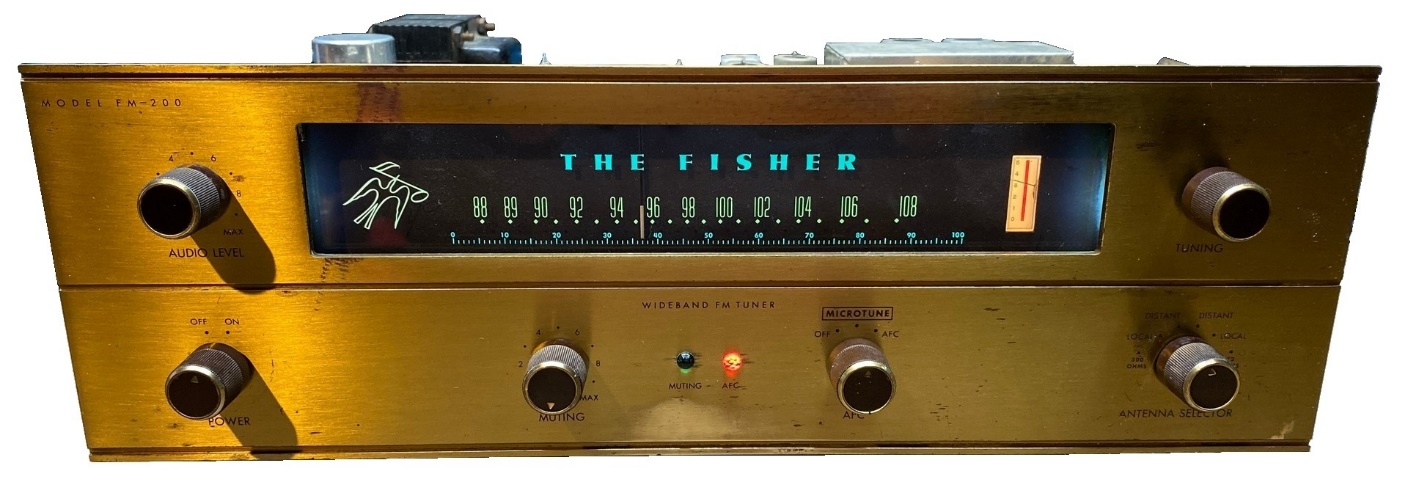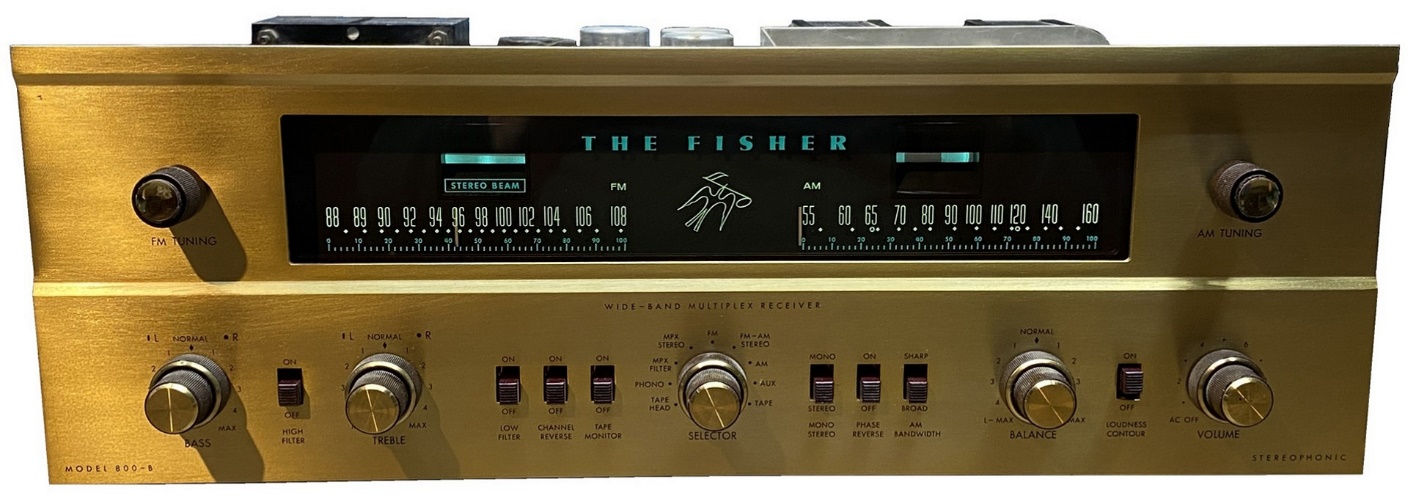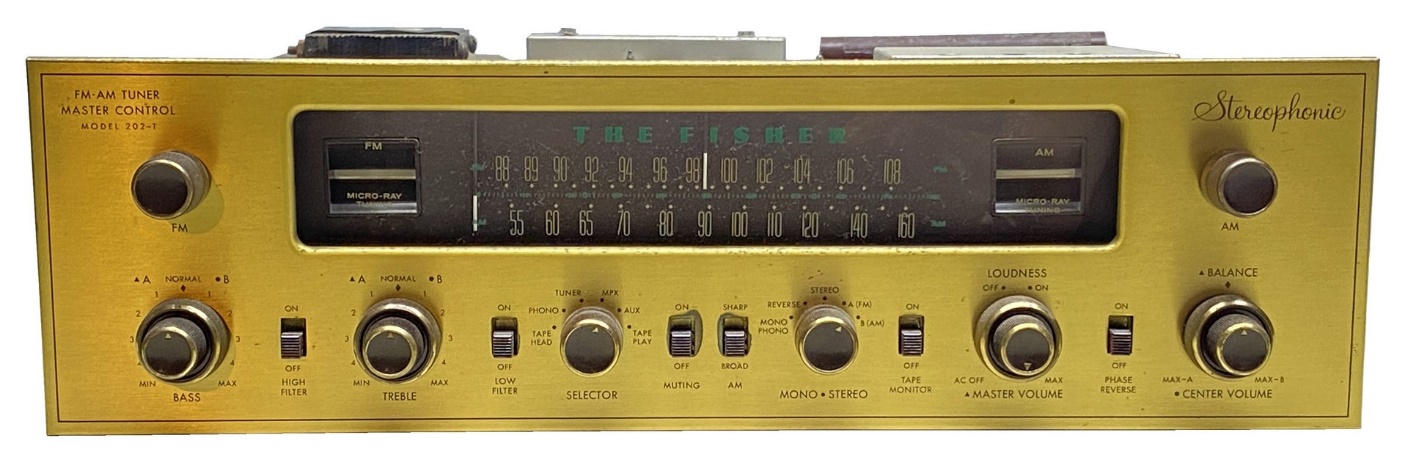
Near the end of October 2020, I outlined in this blog the three Fisher units I had on my want list, giving brief descriptions of each. Now, just over six months later, the list is finally complete.
Some time back, I decided that my Fisher “niche” would be their mono tuners of 1958-61, along with their stereo receivers of 1959-62. I already owned a model 400 stereo receiver which was made from late 1963 until 1966 or so. Since it uses an EM84 tuning eye and not a tuning meter nor an idiot light to indicate FM Stereo reception, I decided to keep it around. I’m not a big fan of the 500-C or 800-C based on their looks.
By October 2020, I had every Fisher receiver I wanted save for the 800-B; and one example each of the Fisher mono tuners of 1958-61 save for the 202-T tuner-preamp and the great FM-200, which in many ways is the mono equivalent of the classic stereo FM-1000 tuner.
To recap, here are three brief discussions of each of those final three Fisher items, and how I managed to find each one.
The FM-200 Tuner

This was the first of the three I found, in late November 2020. Actually, it came together from pieces. I found an FM-200 chassis on the auction site which was missing its front panel, glass dial scale, bottom cover, and all knobs. As luck would have it, there was another auction site listing which had the proper front panel and dial scale. I purchased both. The parts chassis arrived soon as it was shipped through UPS. Unfortunately, November-December 2020 was a time when the United States Postal Service really dropped the ball on mail delivery. Items which would normally take a few days were taking multiple weeks to be delivered – if they were delivered at all. The front panel and dial scale were shipped USPS and took nearly three weeks to travel from Pennsylvania to southern Indiana. Fortunately for me, these parts finally did arrive.
I initially wrote about the FM-200 here and wrote of its restoration here.
Eventually, I put together a set of the proper knobs for this tuner, and ended up using a bottom cover from a junk 202-R tuner to complete the unit after temporarily using a bottom cover from an FM-50-B which I eventually also restored.
The 800-B Receiver

After trying – and failing – to win a good unit on the auction site, I finally scored one of my own in early February 2021. A week or so later, I finally worked up the courage to try it out. You see, I prefer not to operate vintage equipment which is still running on original electrolytic capacitors which are as old – or older – than I am. But nothing happened on the 800-B’s test drive; it just played, and played quite well.
Since then I have acquired – and installed – the proper type of knob caps for the 800-B’s two tuning knobs.
This is easily my favorite Fisher receiver. The symmetrical design is, to me, amazing and part of its appeal as a collector’s item (it is harder to purchase a good 800-B than it is to get its FM-only cousin, the 500-B). Eventually it will receive a proper restoration with a modification or two to extend output tube life.
The 202-T Tuner-Preamp

This has proven to be the most elusive of the three Fishers on my want list. For many months I had seen none for sale on the auction site (or anywhere else for that matter). It seemed as if anyone who owned a 202-T was hanging onto them. But finally, a couple weeks before Memorial Day, I was offered one by a fellow audio enthusiast. I truly appreciate his making this 202-T available to me.
It arrived here on June 1. It is as old as I am yet still operates just fine on its original components, which I find frankly amazing. I looked “under the hood” and I noticed that a little work had been done to it, notably the addition of a newer Fisher MPX-65 multiplex decoder to allow it to receive FM Stereo broadcasts. This, too, will eventually get the full treatment of all new electrolytic capacitors plus replacements for the multiple original “dog turd” capacitors.
So…now what?
Am I going to make a new Fisher want list? No. I have plenty of Fisher projects to keep me busy for quite some time. Most of my tuners have been restored, but I still have a few to work on – plus, most of my Fisher receivers need restoration. Having restored a TA-600 a few years ago, I know that restoration of a Fisher tube receiver is no easy task. But the result is well worth the effort.
In addition, I need to decide which of my vintage radios I am going to keep, and then set about the process of restoring those.
In other words, when you add in household projects…I have plenty to do for quite some time. It actually feels good to say “Enough” when it comes to vintage Fisher.